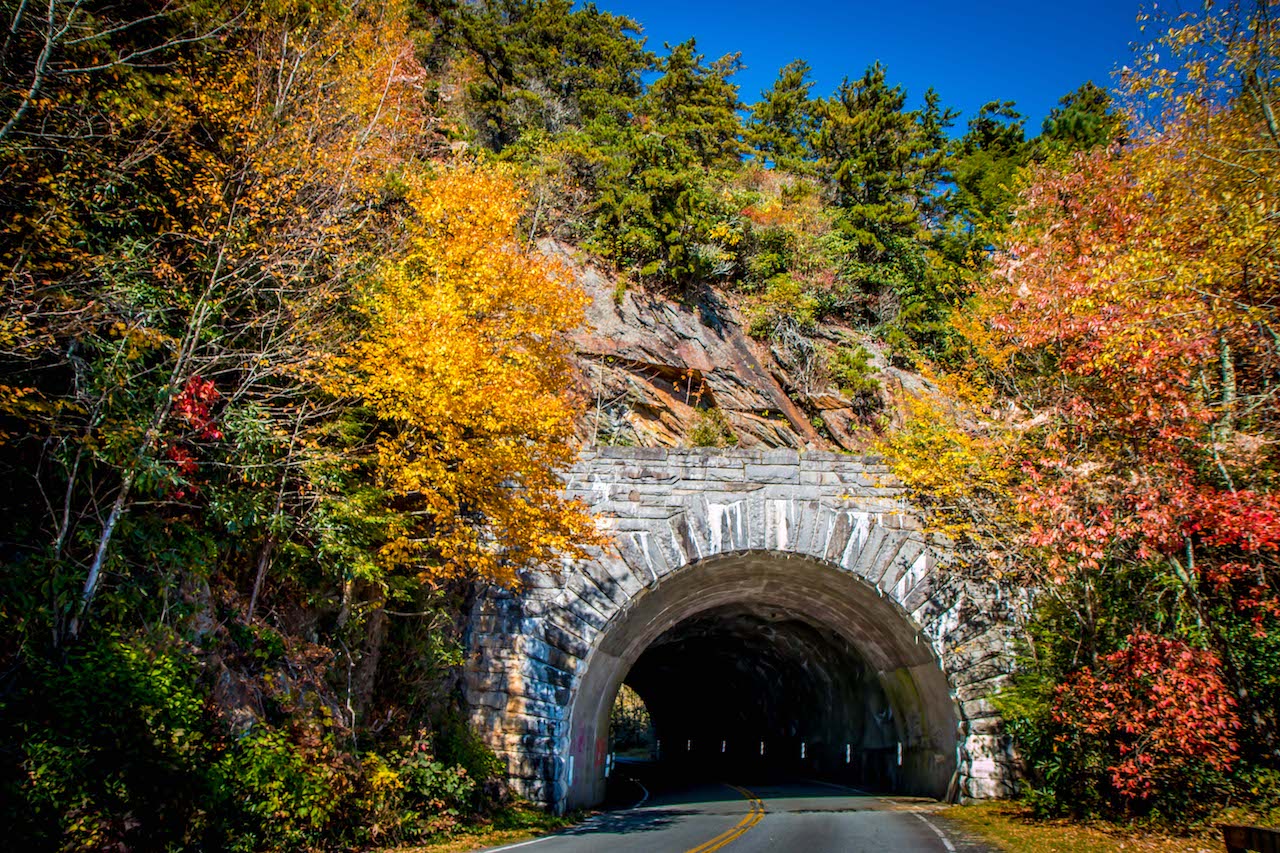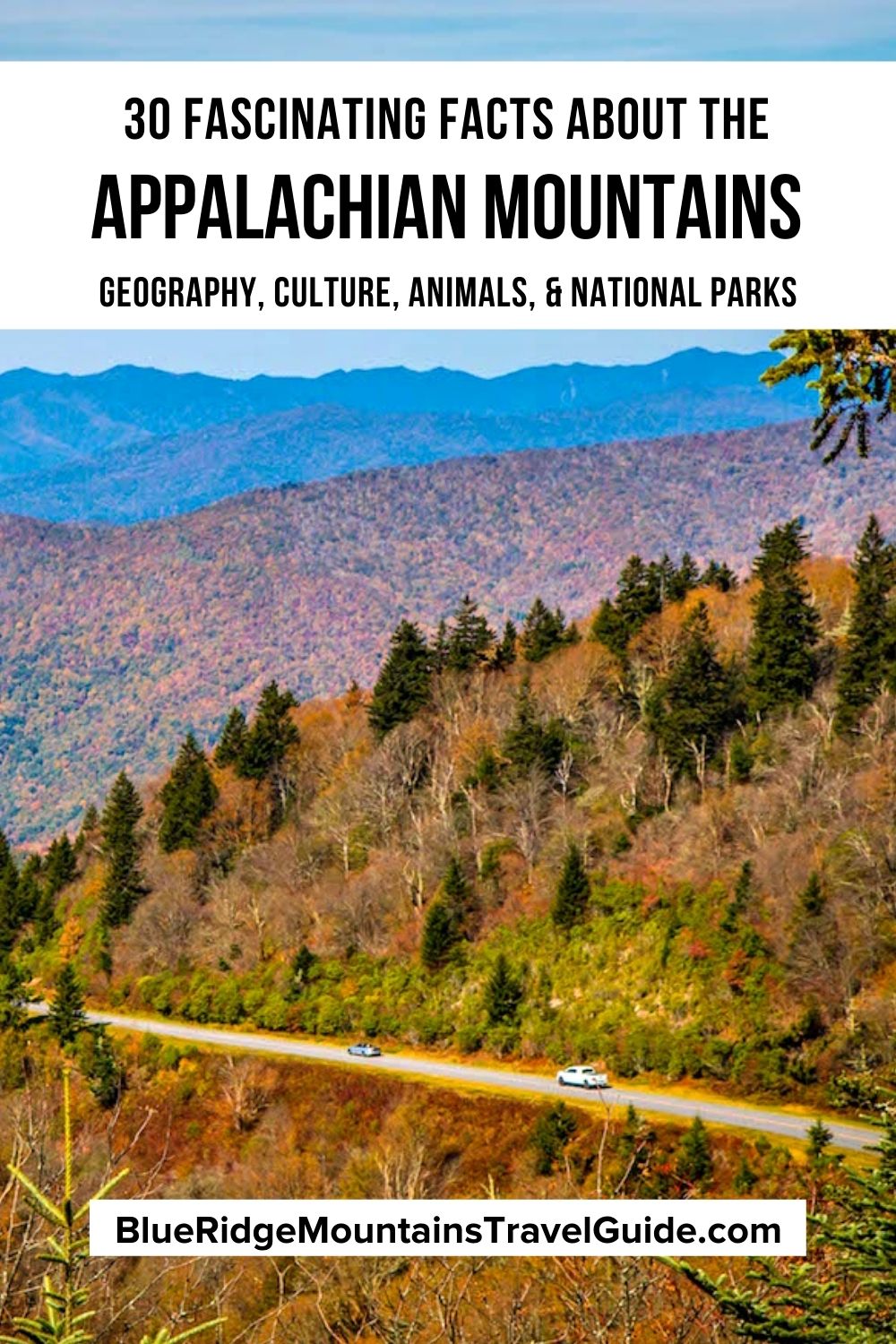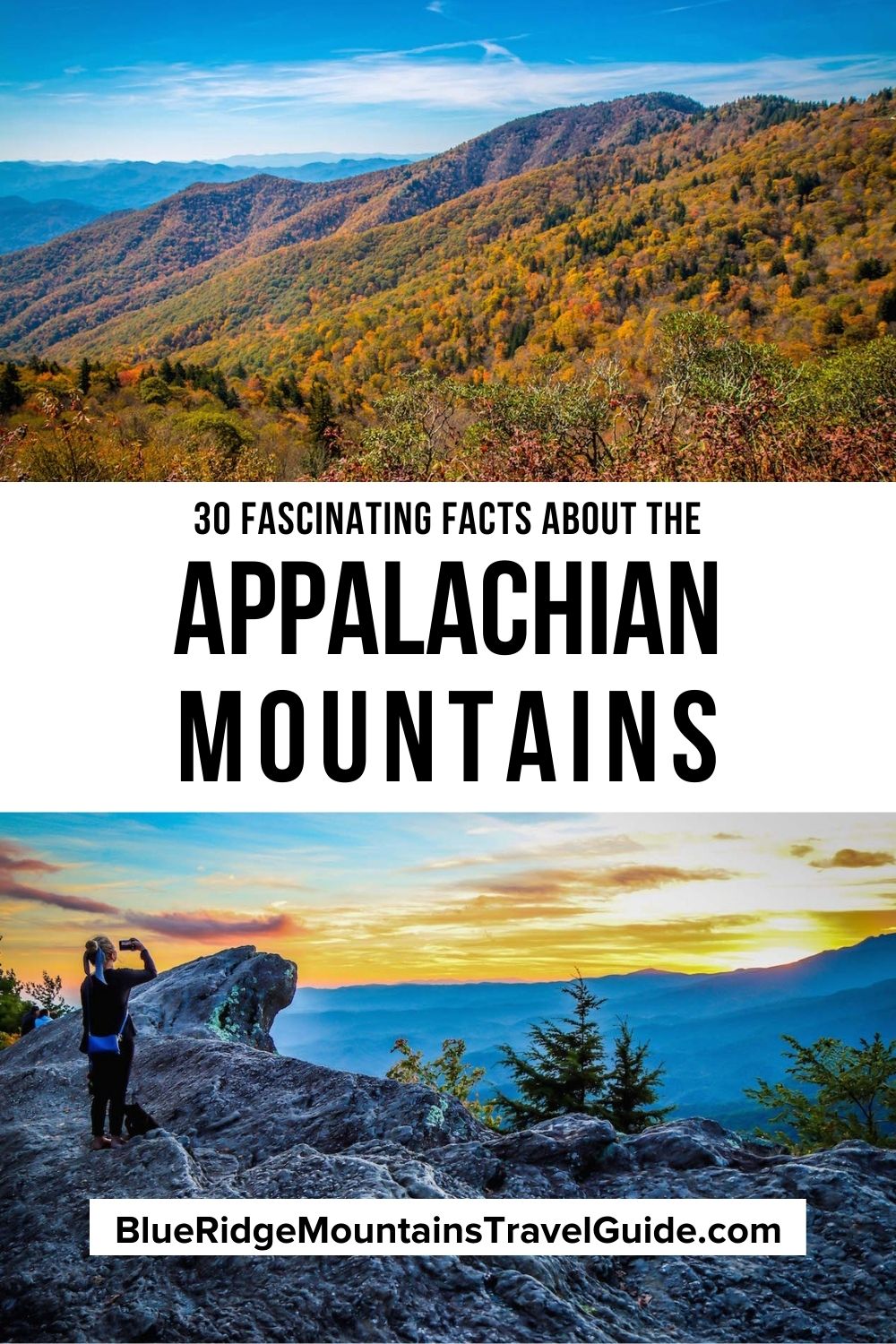The Appalachian Mountains run north to south in the eastern third of the United States, passing through every coastal state north of Florida and all the way up into Appalachian Canada.
They also move slightly westward into other states, including Tennessee, Kentucky, Ohio, and West Virginia.
Within this massive area— ranging from 100 to 300 miles wide and 1500 miles long—are tons of fun facts about the Appalachian Mountain range, including interesting geological and geographical information, numerous cultural quirks, and various natural wonders.
Read on for a slew of intriguing Appalachian Mountain facts, including the answers to frequently asked questions like “How old are the Appalachian Mountains?,” “Where do the Appalachian Mountains start and end?,” and “Which states are in the Appalachian Mountains?”
We also delve into the region’s history, culture, science, wildlife, recreation, and more. It’s an exciting place to learn about, and an even more exciting place to visit!
READ MORE: 30 Fascinating Blue Ridge Mountains Facts
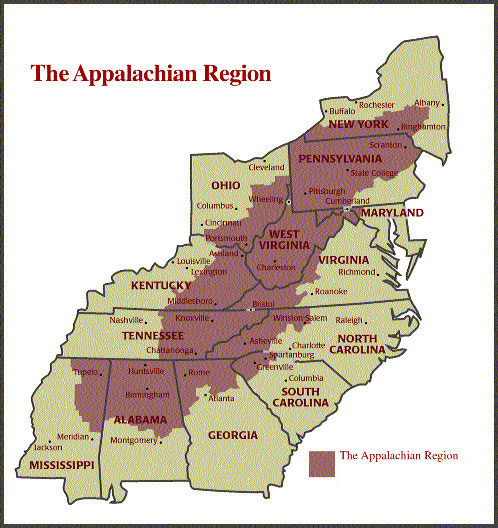
Facts About the Appalachian Mountains Guide
- Appalachian Geography & Geology
- Appalachian History & People
- Plants & Animals in the Appalachian Mountains
- National Parks in the Appalachian Mountains
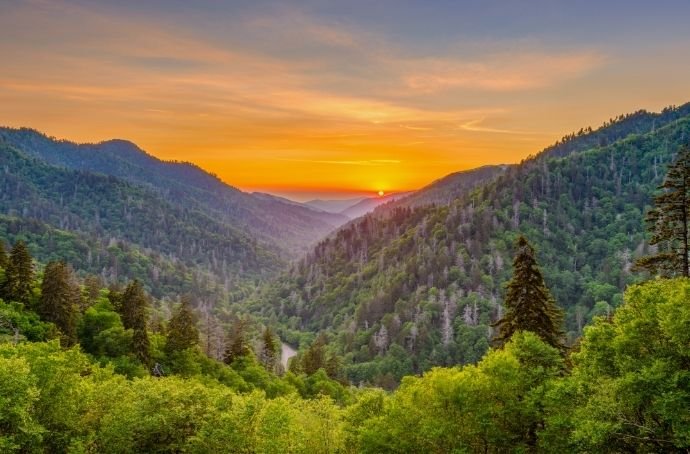
Appalachian Geography & Geology
1. Located in the eastern U.S., the Appalachian Mountains range is one of only three major mountain ranges in the United States. The others are the Rocky Mountains, which are in the center of the country, and the Sierra Nevada in the West.
2. The Appalachian Mountains are the oldest of these three ranges. But “How old is the Appalachian Mountains range?” is a complicated question. The mountains began to form around 480 million years ago during the Ordovician period, continuing to grow for around 200 million years as the supercontinent known as Pangaea formed.
3. When Pangaea broke up, the folds that had been the original Appalachian Mountains all but disappeared, further eroding to basically a vast plain over the Mesozoic Era. So how were the Appalachian Mountains we see now formed? They were created by new volcanic-tectonic activity about 65 million years ago, during the Cenozoic Era.
4. Of course, millions of years of erosion gradually wore the massive mountain peaks down. The Appalachian Mountains are the shortest of the three U.S. mountain ranges, with an average elevationis less than half of the other two ranges.
READ MORE: 30 Fascinating Blue Ridge Mountains Facts

5. The highest peak of the Appalachian Mountains is Mt. Mitchell in North Carolina, which reaches 6,684 feet above sea level. In the Rockies, Mount Elbert stands at 14,440 feet above sea level, while Mt. Whitney of the Sierra Nevada is the highest point in the contiguous U.S. at 14,505 feet.
6. “What states are the Appalachian Mountains in?” is a complex question, because lists vary depending on what regions are included. If we include the piedmont (a.k.a. foothills) region, Alabama, Georgia, South Carolina, North Carolina, Tennessee, Virginia, Kentucky, West Virginia, Maryland, Washington D.C., Pennsylvania, New Jersey, New York, Connecticut, Massachusetts, New Hampshire, Vermont, and Maine are all part of the range.
7. The major regions of the Appalachian Mountains are divided into three sections: Northern, Central, and Southern. The central section stretches from the Hudson Valley to the New River, and the southern section is south of the river. But the Central and Southern Appalachian Mountains are what most people refer to when talking about traditional Appalachian culture.
READ MORE: The Top 25 Blue Ridge Mountain Towns in GA & NC

Appalachian History & People
8. Native Americans began to settle in Appalachia about 16,000 years ago. At the time of European colonization, the Cherokee people were the main tribe in the southern Appalachian Mountains. Other tribes, including the Iroquois (Great Lakes), Powhatan (central coast), and Shawnee (western side) people, were prominent in other regions.
9. European immigration began in the 1700s, with Scots-Irish and German settlers making up most of the early pioneers. These newcomers brought traditions from their homelands. The melding of these cultures, along with Native American and African influences, have created a unique culture of music, art, and food in Appalachia.
10. There were fierce battles and eventually treaties reached between Native Americans and European immigrants. During this era, the Cherokee had over 50 settlements that were connected by established foot trails, which these soon became major wagon routes for the European settlers.
11. By the late 1830s, after signing the Treaty of New Echota, most Cherokees were forced to leave the area under the Indian Removal Act. Traveling the brutal Trail of Tears to Oklahoma, over 1,000 Cherokee died, and countless others were killed due to resistance. The ancestors of those that remained largely live in North Carolina’s Qualla Boundary today.
12. In 1775, Daniel Boone established a route west through Cumberland Gap in Virginia into Kentucky. The route west lead to a monumental expansion of the United States’ original 13 colonies, and made Boone a famous folk figure in Appalachian history in the process.
READ MORE: The Appalachian Culture & History of the Blue Ridge Mountains

13. In the late 1800s and early 1900s, less-than-complimentary stereotypes of those living in the Appalachian Mountains (particularly lower Central and Southern Appalachia) began to form. By and large, these early settlers had initially been recognized as hard-working, self-reliant types.
14. German immigrants (often called “Pennsylvania Dutch”) mostly settled in Virginia and Pennsylvania. They brought along German food traditions, such as apple butter and sauerkraut, and building techniques like chinked-corner cabins. Though they didn’t assimilate into US culture, the Germans were treated much better than the Scots-Irish settlers.
15. The “hillbillies” of Appalachia were Scots-Irish immigrants, who were referred to by English settlers as “Billyboys” due to their support of William of Orange. Hillbillies were derided as wild, often reclusive mountain people, with fierce loyalty to family and a rejection of authority. They are also often associated with poverty in the Appalachian Mountains.
16. African people, both free and enslaved, were also mixed into this collection of immigrants. Afro-Caribbean influences on Appalachian food and agriculture are still strong today, especially in crops like black-eyed peas, okra, sweet potatoes, sorghum, watermelon, and peanuts.
17. The instruments of the Scots-Irish (fiddle) and Africans (banjo) combined to provide one of the most popular cultural parts of Southern Appalachia: its music. Bluegrass and Old-Time music are still huge in the region, and they are accompanied by well-established dancing traditions as well.
18. The isolation of the Appalachian region and the locals’ high regard for tradition lead to serious poverty in the 20th century, when life in the United States gradually became more urban than agrarian.
READ MORE: Appalachian Folklore, Monsters and Superstitions
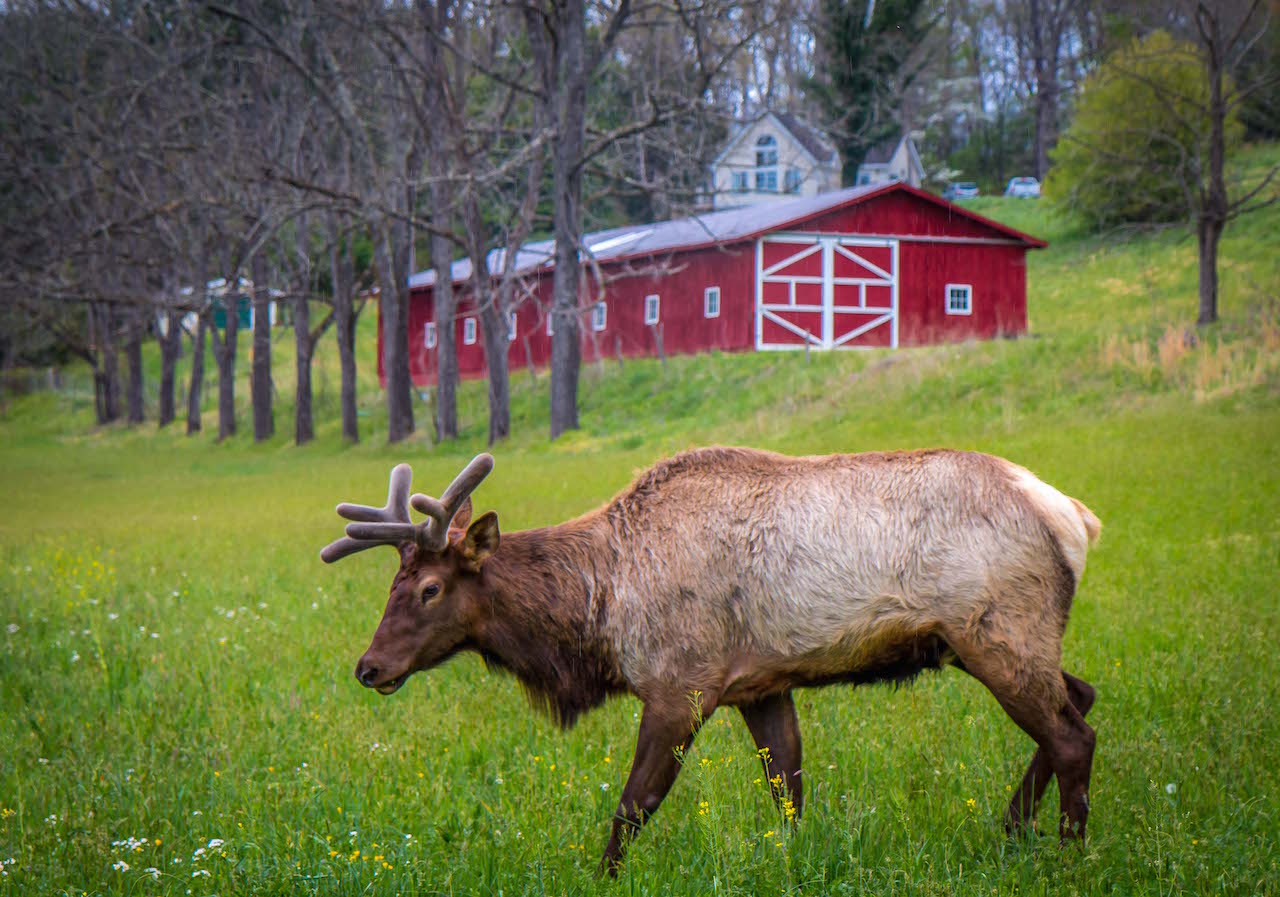
Plants & Animals in the Appalachian Mountains
19. The climate of the Appalachian Mountains is temperate, with distinct seasons and lots of annual precipitation (35 inches to 51 inches). Gorges State Park in NC (96 inches/year) and Mt. Washington in New Hampshire (91 inches/year are the two wettest US locations east of Oregon and Washington.
20. The diverse climate, precipitation, and changes in elevation of the Appalachians give the region wild biodiversity of plants and animals. The north-south orientation of the mountains provides easy seasonal migration routes for animals.
21. While there are plenty of evergreens in Appalachia, including red spruce, balsam fir, eastern hemlock, and white pine, the region is characterized by its diverse deciduous hardwood forests. Among its most abundant tree canopy species are various oaks and maples, as well as birch, beech, ash, tulip poplars, and more.
22. The understory trees and shrubs of Appalachia are renowned for their beautiful laurel, flame azalea, witch hazel, and spicebush. Wildflowers are also abundant. Some of our favorite species include Fire pink, Dutchman’s breeches, Bloodroot, Turk’s cap lilies, Trillium, Jack-in-the-pulpit, and lots more.
READ MORE: Non-Venomous vs Venomous Snakes In Georgia (Identification Guide)
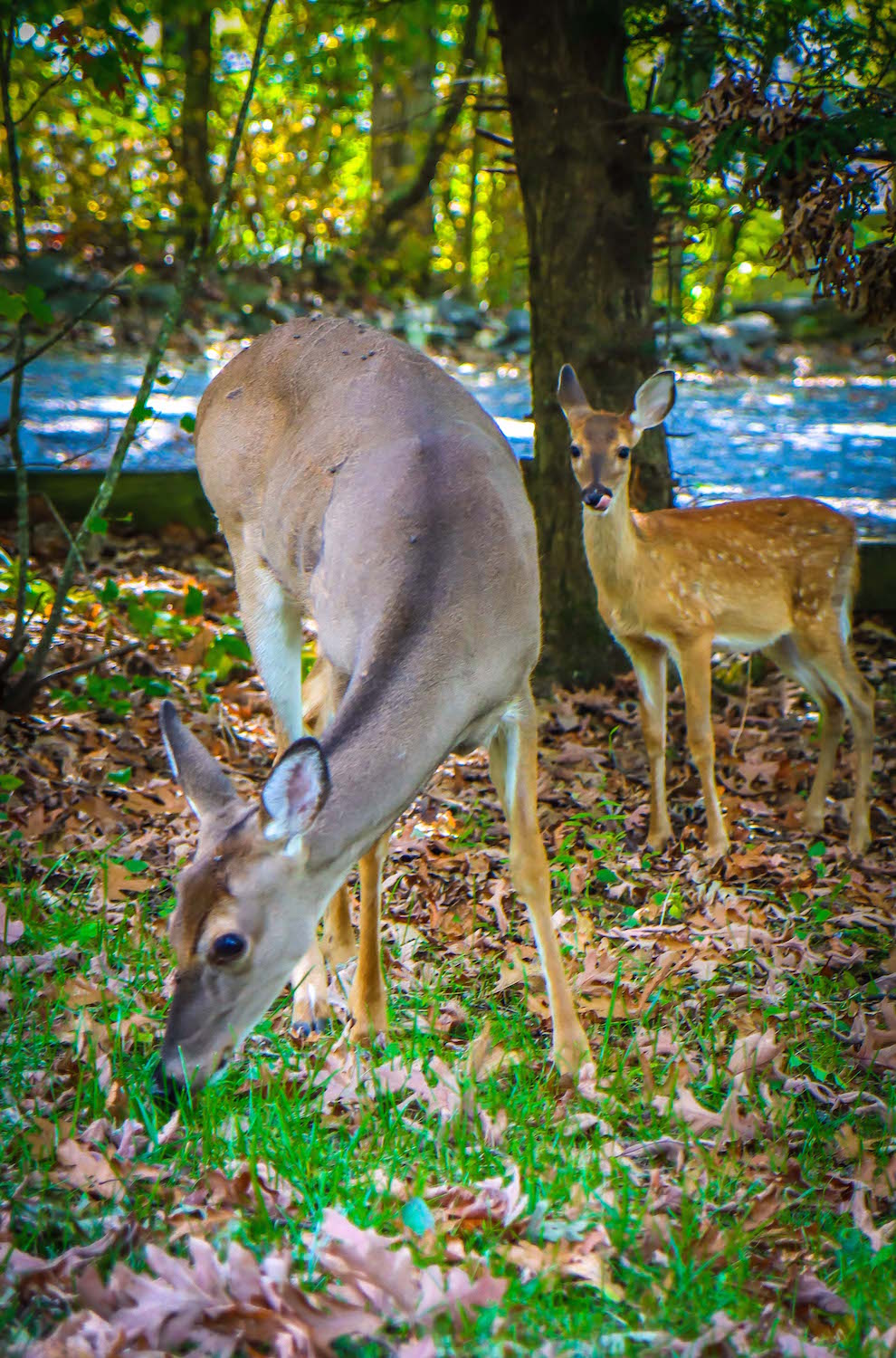
23. The most famous of the Appalachian Mountains animals are large mammals like white-tail deer, elk, and moose (in the northern regions), as well as black bears. Other sizable mammals include beavers, coyotes, foxes, bobcats, raccoons, skunks, opossums, groundhogs, and five species of tree squirrels.
24. There are some amazing birds in Appalachia as well. There are ground-dwelling forest birds, like wild turkeys and ruffed grouse, and big birds of prey including bald eagles, red-tailed hawks, peregrine falcons, and great horned owls. The raven, wood duck, great blue herons, and mourning dove are other mountain-forest dwellers in the region.
25. Salamanders are another amazing resident of the Appalachian region. In fact, Southern Appalachia is sometimes referred to as “the salamander capital of the world”, with more species than anywhere else. The Hellbender salamander is the largest of the group, capable of growing over two feet long!
READ MORE: Non-Venomous vs Venomous Snakes in North Carolina (ID Guide)
National Parks in the Appalachian Mountains
26. There are 6 national parks in the Appalachian Mountains, 8 national forests, 2 national wildlife refuges, as well as loads of state parks. There are also famous scenic driving routes like the Blue Ridge Parkway, Skyline Drive, and Kancamagus Highway, plus the world-renowned Appalachian Trail.
27. Of the country’s 400+ national parks, the Blue Ridge Parkway and Great Smoky Mountains National Park are the two most visited national parks in the United States. The Blue Ridge Parkway gets nearly 16 million visitors a year, while Great Smoky Mountains National Park gets just over 14 million.
28. North Carolina’s Pisgah National Forest is home to the Cradle of Forestry in America, the first school of forestry in the US. It was founded in 1898 by a German Ph.D., Carl A. Schenck, who was brought in by George Vanderbilt to manage his massive Biltmore Estate in Asheville NC.
29. There are 3 rivers in the Appalachian Mountains that rank amongst the oldest rivers in the world– the French Broad River, the New River, and the Susquehanna River. At approximately 300 million years old, all three of these rivers predate the more recent formation of the Appalachian Mountains.
30. Finally, some more quick facts about the Appalachian Trail: The Appalachian Trail in Georgia starts at Springer Mountain and winds 2,190 miles northward to Mount Katahdin in Maine.
The trail, which was proposed in 1921 and completed in 1937, passes into 14 states, including North Carolina and Virginia.
The trail is maintained by 31 trail clubs as well as other partnerships, andjointly maintained by the National Park Service, US Forestry Service, and the Appalachian Trail Conservancy. It is inarguably the pinnacle for hiking in the Appalachian Mountains. –Jonathon Engels; lead image from Mt Mitchell NC by Bret Love & Mary Gabbett


